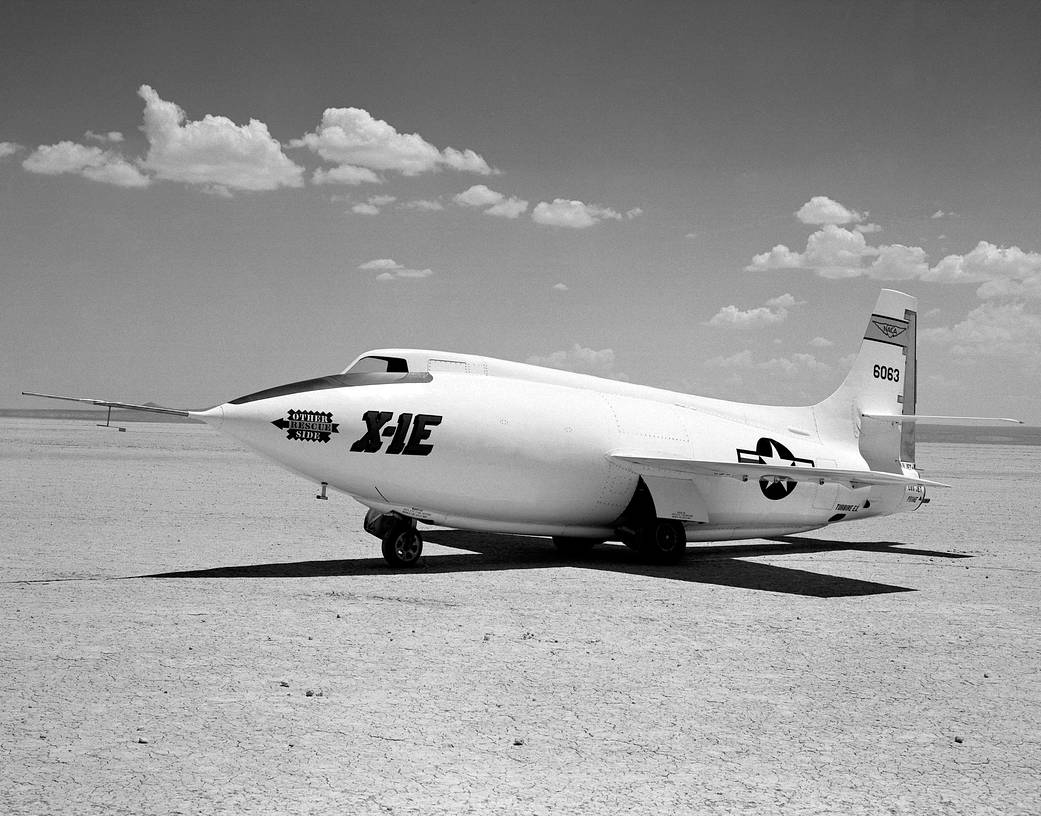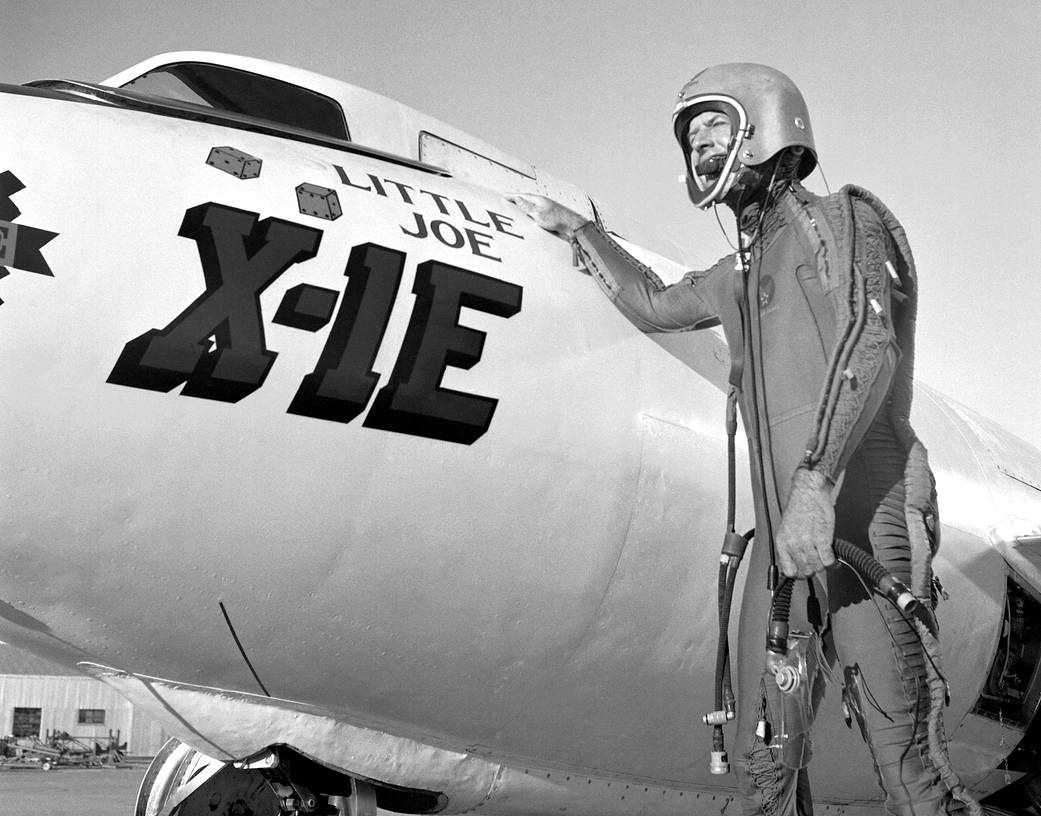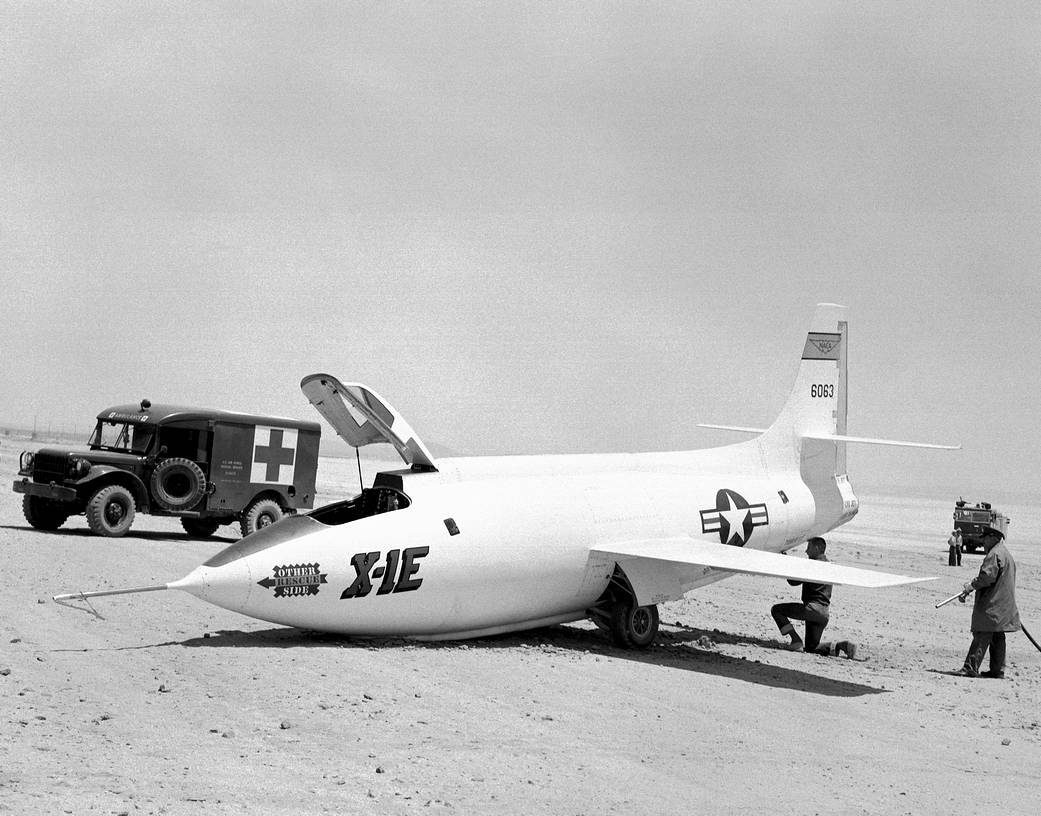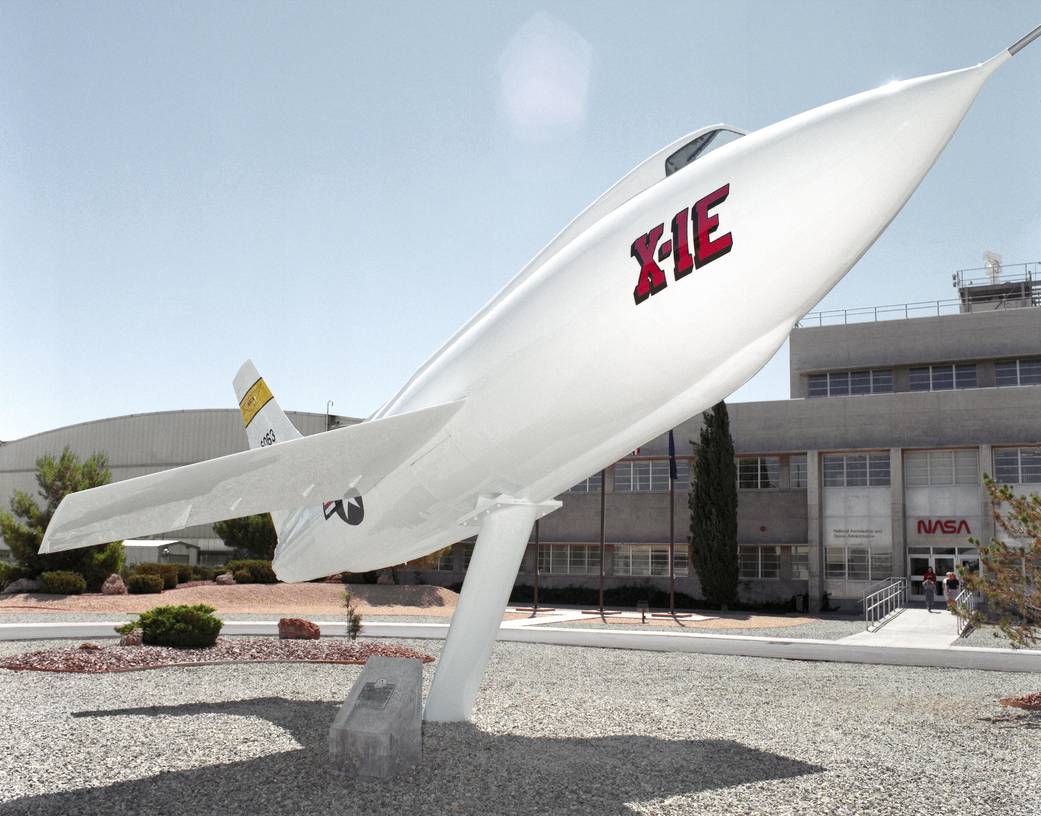The NACA X-1E was the last of the X-1 series of aircraft, and its construction benefited from the lessons of earlier research aircraft programs. This included the explosions which destroyed the X-1D and the X-1-3 research aircraft, the poor performance of the X-3, and the destruction of both X-2s.
In 1951, the Air Force expected to begin flights with the X-1D, while the NACA was to soon receive the X-1-3. Both aircraft could reach speeds in excess of Mach 2, but were lost in explosions before they were able to produce data. The X-1A and X-1B would not be delivered for two more years, leaving only the NACA’s X-1-2 (serial number 46-063) still flying. The Air Force had already retired the X-1-1 (serial number 46-062), giving it to the Smithsonian. Soon after, the NACA discovered that the high-pressure nitrogen spheres in the second X-1 were likely to fail due to metal fatigue. The aircraft made its 54th and final flight on Oct. 23, 1951.
At this juncture, the NACA decided to flight test the characteristics of very thin wings at transonic speeds. Accordingly, NACA engineers proposed the X-1-2 be modified with the new airfoil and a new turbopump fuel system (which eliminated the high-pressure nitrogen spheres).
The High-Speed Flight Station (now NASA’s Armstrong Flight Research Center in Edwards, California) made some important modifications. The side hatch was replaced by a upward opening canopy, similar to that on the D-558-II. The new canopy allowed addition of an ejection seat, and gave the pilot easier access in and out of the cockpit. Technicians also installed the new turbopump fuel system. Meanwhile, Stanley Aviation Company built the new thin wings, a mere 3 3/8th inches thick at the wing root, fitted with over 200 pressure openings for aerodynamic data, and another 343 strain gages for structural loads and aerodynamic heating measurements. Similar in thickness to those on the X-3, the wings of the emerging aircraft – called the X-1E – would supply the Mach 2 flight data which the X-3 had been unable to provide due to its poor performance.
Once the modifications were completed, several months of ground tests were required before the aircraft could take flight. NACA research pilot Joe Walker was selected as project pilot. Walker made the first X-1E glide flight on Dec. 15, 1955. The XLR-11 engine and the turbopump had a number of problems which forced Walker to shut them down. The X-1E did not fly again until April 1956, but, despite some problems, it made good progress. On the X-1E’s sixth flight, on June 7, Walker reached Mach 1.55, in what was the airplane’s first supersonic flight since being modified. Walker raised this to Mach 1.74 on June 18, Mach 2 on Aug. 31, and Mach 2.1 on Sept. 14.
This speed buildup was followed by three flights that were marred by engine and turbopump problems. It was not until April 1957 that flights resumed. The X-1E suffered another setback on May 15, 1957, when after a Mach 2 flight, the aircraft was severely damaged in a landing accident. Repairs to the X-1E continued through the summer, and the aircraft did not fly again until Sept. 19, 1957. The X-1E ended its flights for the year on a high note, however, when on Oct. 8, the aircraft reached Mach 2.24. This was the highest speed it would achieve.
The X-1E’s research flights indicated the aircraft had marginal directional stability at high Mach numbers. The X-1E, despite all the modifications, still had the original bullet-shaped X-1 fuselage, so this would be expected. To improve directional stability, two ventral fins were added to the aft fuselage. When flights resumed in May 1958, Walker tested the aircraft’s stability and control with the fins.
Walker left the X-1E program after 21 flights, and NACA research pilot John McKay took his place. McKay made two checkout flights in the X-1E during September 1958. The X-1E now was used to test engine modifications and a new fuel. The rocket chamber pressure was increased, and nozzle extensions added to increase engine thrust. (Similar nozzle extensions were also added to the D-558-II and X-2.) McKay flew a pair of research flights in October 1958 to test these engine changes. His Nov. 6, 1958, X-1E flight was a low-altitude/low-Mach test of a new propellant called “U-Deta.” This was a mixture of unsymmetrical dimthydrazine and diethylene triamine which replaced the alcohol/water mix. The engine modifications and the new propellant were expected to boost the X-1E’s maximum speed to nearly Mach 3.
After McKay’s November 6 flight, which was his fifth flight and the 26th by the X-1E, the aircraft was grounded for inspection and installation of a new ejection seat. During the inspection, X-rays showed a significant crack in the fuel tank wall. The cost of repairing the crack, along with the impending arrival of the X-15, meant the end of the X-1E program. A number of the research projects intended for the X-1E were transferred to F-104s, which had similar performance. The X-1E is on display in front of the Armstrong headquarters building.


































